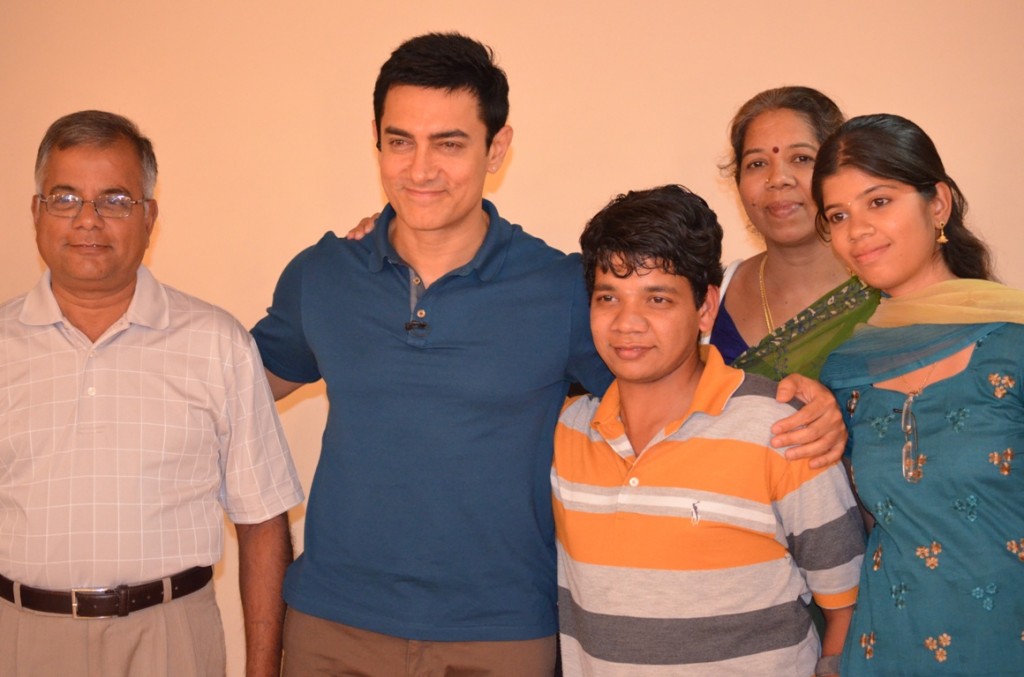
Sai will become the first Indian with a disability to travel to the icy continent. In his 20s, Sai said he had an extra growth in his spinal cord and a surgery to remove it left him disabled.
“This put tremendous stress on my parents. Lack of awareness and societal shame of bringing up a child with disability pushed them to a corner. Not a hospital was left unvisited to find a cure for my disability,” said Sai in an email interview.
“It is a childhood no one should have. No parents should be given. But it happened,” he said.
He was forced to change many schools as they could not help him due to his disability. But, believing that his “salvation” lay in education, his parents pushed him through different schools.
“My disability turned out to be my asset. It gave me many skills of my life,” said Sai who hails from Thiruchirapalli in Tamil Nadu but stays in Andhra Pradesh with his family.
He later received a scholarship for a degree at the University of Wisconsin-Madison in the US.
Sai went on to become an engineer.
“It was pleasantly shocking at how disabled friendly the US was. Their infrastructure support for the physically-disabled was simply mindblowing. Every public place, transport, nook and corner was accessible.
“It was like a little heaven, for a person with disability,” he said.
His life changed when he spotted a skydiving advertisement on the university campus, and went for it. Thanks to that, he is now in the Limca Book of Records as the first Indian with a disability to skydive from a height of 14,000 feet.

Leading disability rights’ activist Javed Abidi is all praise for Sai.
“Sai Prasad Vishwanathan is a true role model for millions of young disabled people across the country on how disability is not an impediment to success,” Abidi said.
His story “is a testimony to the fact that if a disabled person has access to the same opportunities like any non-disabled person, the possibilities are endless”.


“Aamir Khan brought the disability issue the much-needed attention. For the first time in the history of our country, disability was being discussed from the viewpoint of education and infrastructure, rather than karma and attitude,” said Sai.
With the help of four friends, Sai has started an initiative called Sahasra, which provides scholarships to needy and meritorious students for engineering and higher education.
The initiative has so far helped 50 students for their engineering education, and provided scholarships worth Rs.12 lakh in two years.
It was selected as one of the top 10 business plans in a competition conducted by the Hass School of Business, University of California, Berkeley.
–IANS
The opinions, beliefs and viewpoints expressed by authors, news service providers on this page do not necessarily reflect the opinions, beliefs and viewpoints of Hill Post. Any views or opinions are not intended to malign any religion, ethnic group, club, organization, company, or individual.
Hill Post makes no representations as to the accuracy or completeness of any information on this site page.




The spinal cord is a bundle of nerves that carries messages between the brain and the rest of the body.Acute spinal cord injury (SCI) is due to a traumatic injury that can either result in a bruise (also called a contusion), a partial tear, or a complete tear (called a transection) in the spinal cord. About 250,000 to 400,000 individuals in the US have a spinal cord injury. About 60 percent of these cases are 30 years old or younger. SCI results in a decreased or absence of movement, sensation, and body organ function below the level of the injury. The most common sites of injury are the cervical and thoracic areas. SCI is a common cause of permanent disability and death in children and adults.